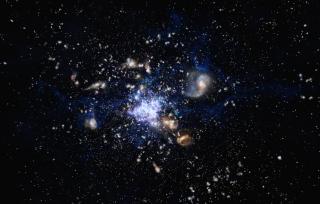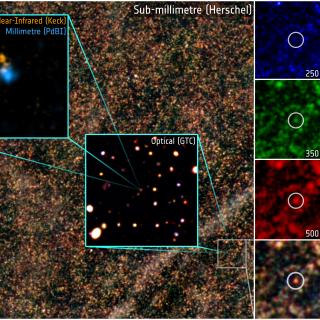Bibcode
Pierel, J. D. R.; Frye, B. L.; Pascale, M.; Caminha, G. B.; Chen, W.; Dhawan, S.; Gilman, D.; Grayling, M.; Huber, S.; Kelly, P.; Thorp, S.; Arendse, N.; Birrer, S.; Bronikowski, M.; Cañameras, R.; Coe, D.; Cohen, S. H.; Conselice, C. J.; Driver, S. P.; DŚilva, J. C. J.; Engesser, M.; Foo, N.; Gall, C.; Garuda, N.; Grillo, C.; Grogin, N. A.; Henderson, J.; Hjorth, J.; Jansen, R. A.; Johansson, J.; Kamieneski, P. S.; Koekemoer, A. M.; Larison, C.; Marshall, M. A.; Moustakas, L. A.; Nonino, M.; Ortiz, R.; Petrushevska, T.; Pirzkal, N.; Robotham, A.; Ryan, R. E.; Schuldt, S.; Strolger, L. G.; Summers, J.; Suyu, S. H.; Treu, T.; Willmer, C. N. A.; Windhorst, R. A.; Yan, H.; Zitrin, A.; Acebron, A.; Chakrabarti, S.; Coulter, D. A.; Fox, O. D.; Huang, X.; Jha, S. W.; Li, G.; Mazzali, P. A.; Meena, A. K.; Pérez-Fournon, I.; Poidevin, F.; Rest, A.; Riess, A. G.
Referencia bibliográfica
The Astrophysical Journal
Fecha de publicación:
5
2024
Revista
Número de citas
39
Número de citas referidas
30
Descripción
Supernova (SN) SN H0pe is a gravitationally lensed, triply imaged, Type Ia SN (SN Ia) discovered in James Webb Space Telescope imaging of the PLCK G165.7+67.0 cluster of galaxies. Well-observed multiply imaged SNe provide a rare opportunity to constrain the Hubble constant (H 0), by measuring the relative time delay between the images and modeling the foreground mass distribution. SN H0pe is located at z = 1.783 and is the first SN Ia with sufficient light-curve sampling and long enough time delays for an H 0 inference. Here we present photometric time-delay measurements and SN properties of SN H0pe. Using JWST/NIRCam photometry, we measure time delays of Δt ab = $-{116.6}_{-9.3}^{+10.8}$ observer-frame days and Δt cb = $-{48.6}_{-4.0}^{+3.6}$ observer-frame days relative to the last image to arrive (image 2b; all uncertainties are 1σ), which corresponds to a ∼5.6% uncertainty contribution for H 0 assuming 70 km s‑1 Mpc‑1. We also constrain the absolute magnification of each image to μ a = ${4.3}_{-1.8}^{+1.6}$ , μ b = ${7.6}_{-2.6}^{+3.6}$ , μ c = ${6.4}_{-1.5}^{+1.6}$ by comparing the observed peak near-IR magnitude of SN H0pe to the nonlensed population of SNe Ia.
Proyectos relacionados

Gas Molecular y Polvo en Galacias através del Tiempo Cósmico
Dos cuestiones fundamentales en la Astrofísica son la conversión de gas molecuar en estrellas y cómo este proceso físico depende del entorno en todas las escalas, desde sistemas planetarios, cúmulos estelares, galaxias hasta cúmulos de galaxias. El objectivo principal de este proyecto es el de estudiar la formación y evolución de galaxias a partir
Helmut
Dannerbauer

Formación y Evolución de Galaxias: Observaciones Infrarrojas y en otras Longitudes de Onda
Este grupo desarrolla varios proyectos extragalácticos en diferentes rangos del espectro electromagnético utilizando satélites y telescopios en tierra para estudiar la evolución cosmológica de las galaxias y el origen de la actividad nuclear en galaxias activas. En el aspecto instrumental, el grupo forma parte del consorcio internacional que ha
Ismael
Pérez Fournon